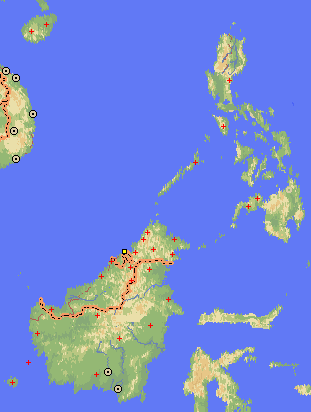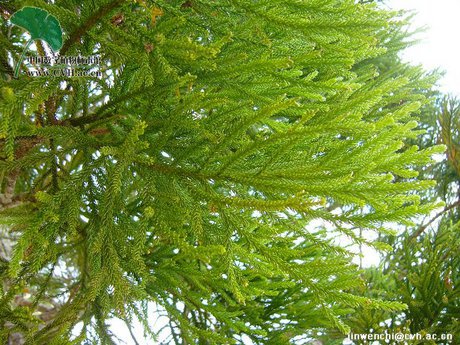Dacrydium pectinatum, first described by David de Laubenfels in 1969 is commonly know as malur in the Mangar language, melur, in the Singkawang language,tjemantan, in the Sampit language, and sempilor, in the Sarawak and Sabah langages of Borneo. Description. Dacrydium pectinatum is an small to large evergreen coniferous tree in the Podocarpaceae family that grows 10 to 130 feet (3 - 40 m) tall, with numerous branchlets forming a dense rounded crown. Juvenile leaves are up to 0.7 inch (18 mm) long, slightly curved, pungent, strongly keeled and quadrangular in cross section, gradually becoming shorter and thicker. Adult leaves keeled on four sides but less strongly on the axial side, abruptly acute to blunt, slightly curved, 0.08 to 0.2 inches (2 - 5 mm) wide by 0.015 to 0.3 inch (0.4 - 0.8 mm) thick. Fertile structures occur on the terminals. Pollen cones are 0.25 to 0.5 inch (6 - 12 mm) long. The seed-bearing structure subtended by a short zone of small leaves around 0.08 inch (2 mm) long, while the cone bracts themselves may be up to 0.12 inch (3 mm) long. Seeds are 0.17 inch (4-4.5 mm) long.

Distribution. This species is native to China - Hainan province; to Malaysia - Billiton, Borneo (where it is common; including Karimata and Natuna Islands) and to the Philippines - Luzon: Sierra Madre and Mindanao: Zamboanga).
Scattered large individuals are found in primary rain-forest other than dipterocarp forest from sea-level to 5,000 ft (1,500 m) but mostly below 1,800 feet (600 m), while dense stands are found in boggy areas and nearly pure stands of stunted trees occur in shallow sandy soils, especially on so-called 'padangs', and on kerangas in heath forest, frequently associated with Gymnostoma; in Sabah also on ultrabasic soils. In Kayangeran For. Res. (Brunei) reported to occur in pure stands in the centre of peat swamps

